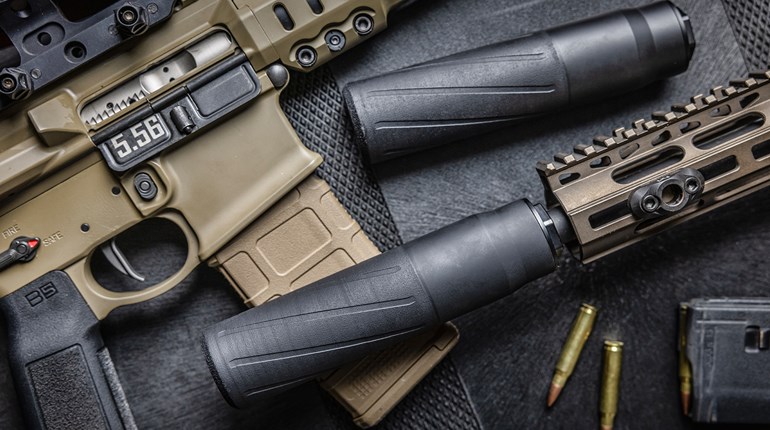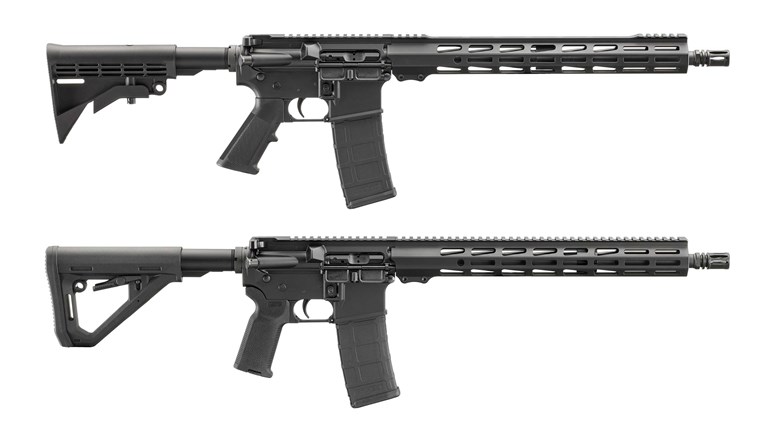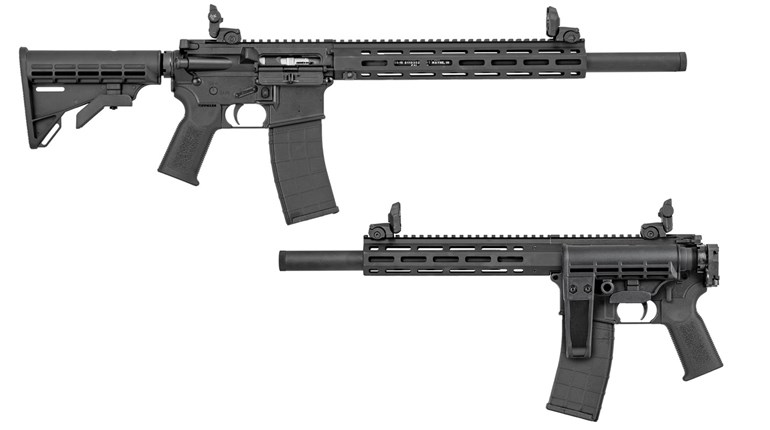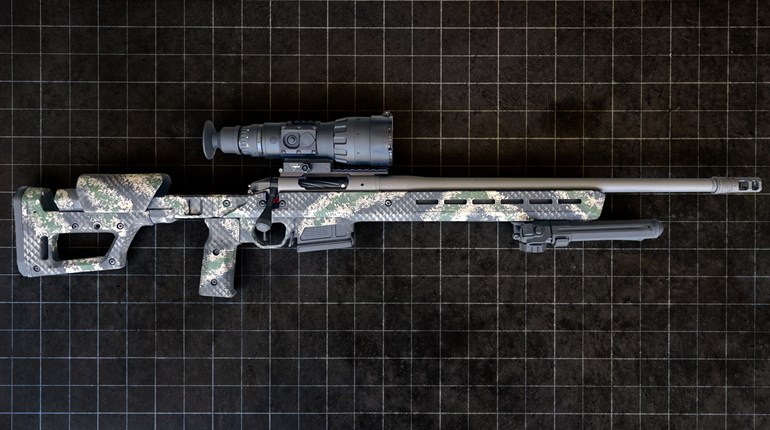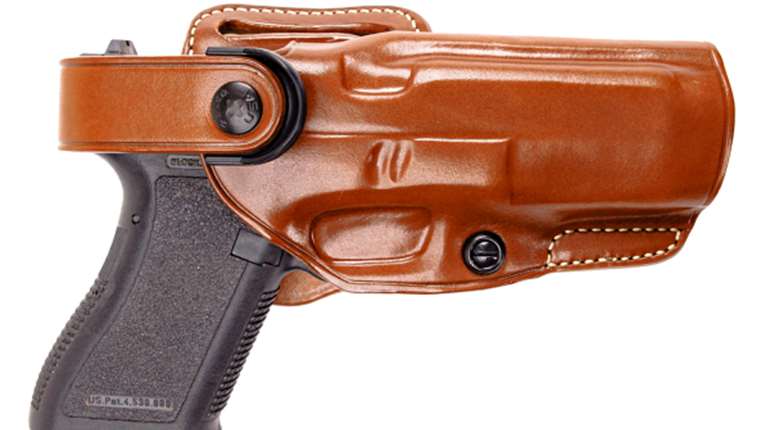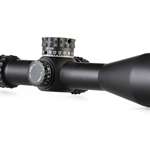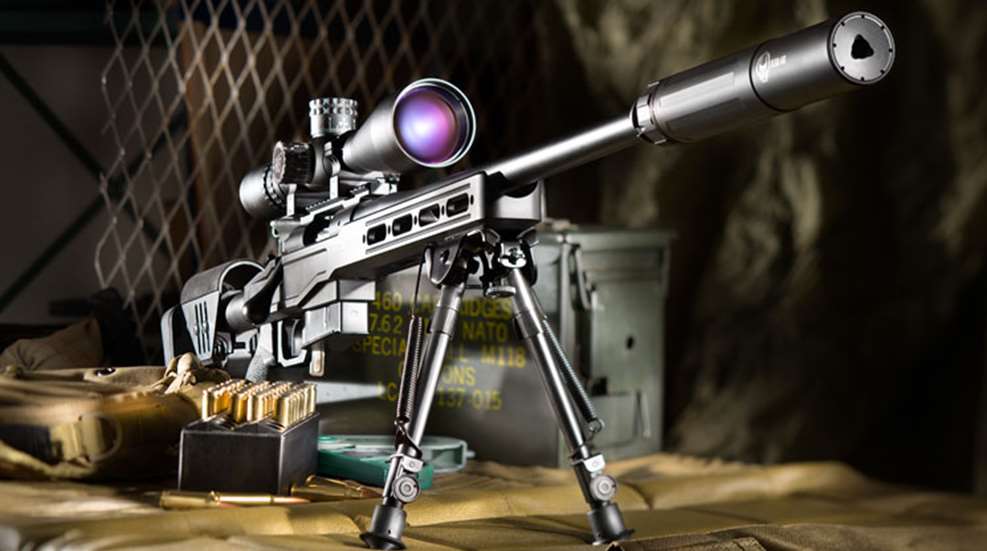
If you’ve ever been to the Basque country of Northern Spain, perhaps you’ve heard of Bergara—a town that lies close to the better-known gunmaking hub of Eibar. Chances are, though, that if you’ve ever heard the name it was in the context of Bergara Barrels. Made in its namesake Spanish village, Bergara Barrels have become well-known throughout Europe and the U.S. for quality and accuracy. Now, those premium barrels are being matched with other quality components and built into complete firearms under the Bergara Rifles banner. The company’s BPR-17 Premier Tactical Rifle is one of its newest offerings, geared toward precision long-range shooting.
If a Hollywood director were going to cast a rifle for a sniper scene in an action movie, the BPR-17 would be a shoe-in for the role.
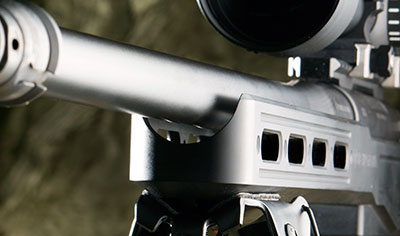
The most immediately recognizable attribute of this rifle is the skeleton-like chassis stock, which is produced by XLR Industries. These stocks are machined from 6061-T6 aluminum, which provides a rigid and durable platform for the action and barrel. While other manufacturers have employed aluminum-bedding blocks in fiberglass or plastic stocks as solid mounting surfaces for receivers, XLR uses a homogenous block to comprise the bulk of the stock’s overall shape—the bedding block basically is the stock.
Available in .308 Win. or 6.5 Creedmoor, the BPR-17 is a futuristic-looking rifle, with a fully adjustable, aluminum chassis-style stock.
At the rear of the receiver, the rifle uses an AR-style castle nut and buffer tube to connect the body of the chassis to the adjustable buttstock. Using hex screws, the stock is adjustable for both length-of-pull and comb height, so the rifle can be fit individually to a shooter and optic. The adjustable cheekpiece is padded with foam to provide a comfortable cheek weld. The stock is milled-out below the barrel channel to save weight and to allow for the mounting of accessories via elongated slots and 16 tapped mounting holes. The front sling swivel stud would most likely serve as the mounting position for a bipod, since the accessory slots could be used to mount a flush cup sling attachment to match the one included in the rifle’s buttstock. It’s a heavy stock, true, but on the other hand I wouldn’t worry about it flexing under any circumstances.
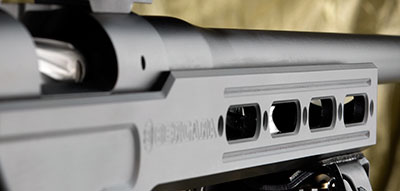
Bergara’s receiver is a hybrid design, using elements of some of the most successful actions in the industry. At first glance, the cylindrical action most closely resembles the Remington 700, but upon closer inspection, there are some significant differences. For starters, the BPR-17 action’s recoil lug fits into a recess at the face of the receiver and is only visible as it extends downward inside the stock’s inletting. This action also uses a bolt stop at the nine-o’clock position of the rear of the receiver like you’d find on a Defiance or Borden receiver. The fluted, stainless steel bolt is an amalgam of designs, with an angled nose to match the action’s cone breech, a floating bolt head and a sliding-plate extractor. There was very minimal play between the bolt and receiver when out of battery, and the bolt lock-up was indicative of precision manufacturing. Overall, the receiver is solidly constructed and well thought-out.
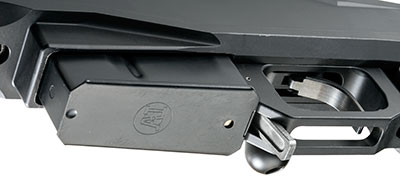
The rifle feeds from a single-column, detachable-box magazine made by Accuracy International. It locks into the aluminum chassis with a paddle-style release and facilitates in-line feeding, which is less likely to cause reliability issues than traditional, staggered-magazine designs. Just to the rear of the magazine well are a beefy but skeletonized trigger guard and an AR-style vertical pistol grip with finger grooves and a generous palm swell. The BPR-17’s Timney Trigger uses a flat trigger bow, which works very well with this grip arrangement. My sample rifle’s trigger broke cleanly and consistently at right around 2.5 pounds, which was a real aid in precision shooting.
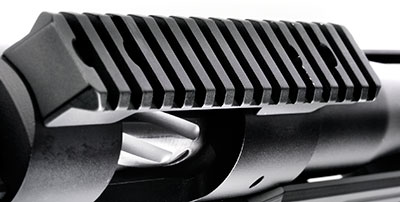
Naturally, the BPR uses a Bergara-manufactured button-rifled barrel—in this case made of 416 stainless steel. Both the barrel and receiver are Cerakoted black to match the anodized finish of the stock. One of the things I liked about this rifle was the barrel’s contour. It wasn’t so fat as to turn the rifle into a boat anchor, yet it wasn’t so light as to heat up after three to five rounds; the medium-heavy contour was just right. The barrel is 20 inches long on the .308 Win. version of the rifle (it’s 22 inches on the 6.5 Creedmoor), which is a good length for a precision rifle meant for field use. While the muzzle is threaded 5⁄8-24 for mounting a suppressor or other muzzle device, the rifle comes standard with a Dead Air Armament six-port muzzle brake/suppressor mount that cuts recoil, but obviously adds concussion. No, a muzzle brake isn’t a must-have on a 10-pound .308, but it does increase the likelihood that the shooter will be able to see the bullet’s impact downrange, which is an asset, particularly when shooting at greater distances.

One of the challenges of evaluating a rifle’s performance is that anything but a known-quantity scope can be suspect—if the rifle doesn’t perform, how can one be sure that it wasn’t the fault of the optic? Bergara made my life easy and shipped the rifle with a Nightforce NXS 3.5-15x50 mm optic mounted. Not only is this scope an ideal complement to this rifle from a size and capability standpoint, I have never witnessed the mechanical failure of any Nightforce scope. I cannot make that claim regarding most of the other optical products that I’ve encountered, and I’ve used my share.
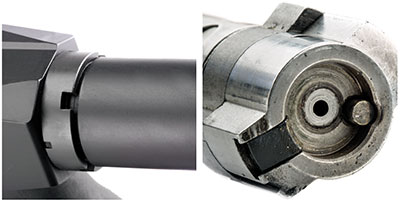
Testing tactical-style bolt rifles for accuracy is usually pretty forgiving, and the BPR-17 was no exception. Its ample weight, adjustable-stock design, muzzle brake and terrific trigger made shooting from the bench a simple process, and felt recoil was minimal. Five-round groups are more challenging on both the rifle and the shooter than three-round groups, and a rifle that weighs 12 pounds with a scope mounted makes life easier on the guy working the trigger. Most importantly, the rifle fed, ejected and extracted with 100-percent reliability throughout our testing, even when a blown primer from excessive pressure was encountered. The bolt had to be forcibly opened to remove the spent case, and a weak extraction system would have revealed itself under the circumstances. All worked as intended.
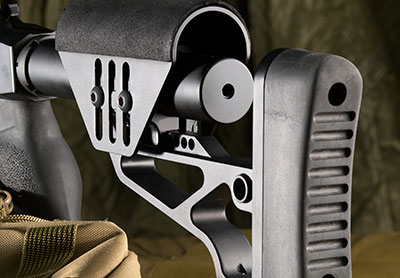
Accuracy was solid, as expected, with the three loads we tested. What the table won’t tell you, though, was that most of the groups showed promise of being far tighter. In my experience, this rifle showed all of the signs of a tight action and a great barrel, but was hampered a bit by its bedding. I know what you’re thinking: this rifle uses the infallible aluminum-bedding block that every writer raves about—it must be perfect. Regardless of the accuracy of today’s CNC machines, when you mass-produce an action in one location to one set of tolerances and build a stock on another machine in a different location, they are not going to mate perfectly to one another. You show me a rifle that doesn’t need to be bedded, and I’ll show you a rifle that would shoot better if it were. The good news is that glass bedding a rifle, especially a rifle like this one, is inexpensive and can be accomplished by any skilled hobbyist or competent gunsmith. Don’t get me wrong, the BPR-17 shoots just fine out of the box; I just think that with a little tweaking, the potential is there for truly marvelous accuracy.
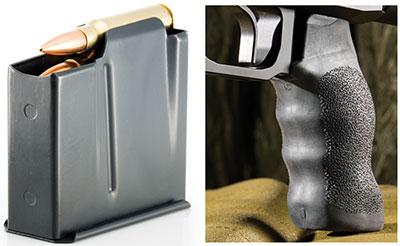
At nearly 10 pounds empty, the BPR-17 is not a lightweight rifle, but it is not designed to be. End users of a rifle of this type are likely to do most of their shooting from a bipod or another supported position, and the stock’s design is well suited to that kind of shooting. The grip angle and adjustable stock are laid out in a way that makes spending lots of time prone behind the rifle as comfortable as possible. Spending hours on end shooting prone in a class or match environment can become exhausting, and adding-in the cumulative effects of recoil can really affect a shooter’s performance. A light-recoiling rifle such as the BPR-17 that can be fit to the individual shooter is a great benefit in such scenarios.
Bergara broke from the traditional mold of sporter-style stocks and heavy barrels when it came to creating the Premier Tactical Rifle. For about half of the price of a comparable gun from competitors, the Bergara offers a premium barrel, precision-made action, great trigger and a chassis-style aluminum stock. The package shows all of the signs of solid construction and is both reliable and accurate. Few riflemen in the U.S. look to Spain as a source for hardware, but with Bergara rifles and barrels becoming increasingly popular stateside, that may soon change.

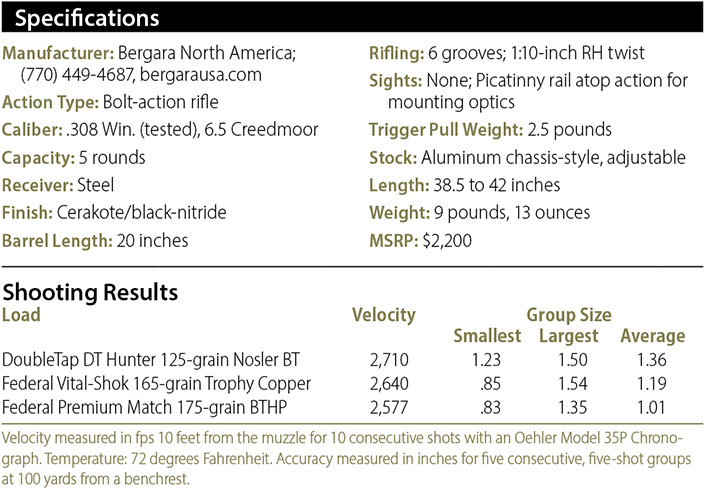
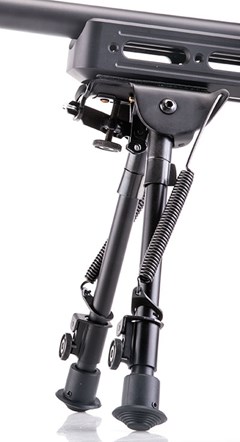 TacShield Bipod
TacShield Bipod
When shooting from a prone or sitting position, having a sturdy bipod makes a big difference in accurate shooting. TacShield offers heavy-duty, adjustable bipods to assist in long-range efforts.
All bipods are constructed of high-grade aluminum and have a durable matte finish. Precision-tension leg-locks, swivel-stud attachment and spring-assisted leg retraction also come standard, and some models feature a pivoting attachment point that allows the bipod to be fine-tuned for precision shooting when needed. The heavy duty models offer 6- to 9-inch, 9- to 13-inch and 13- to 21-inch adjustment sizes, for benchrest, prone and seated positions.
The adjustable legs pull out to their extended length and retract at the push of a button. Models that pivot feature a large lever that is rotated counter-clockwise to loosen, allowing the bipod to rotate approximately 15 degrees off-center, either left or right. This is approximately enough rotation so that the rifle would be level if one leg were extended and the other retracted—as might be needed on uneven terrain.
MSRP: $45.99 (9- to 13-inch version shown), from $39.99 to $54.99 as configured; tacshield.com












